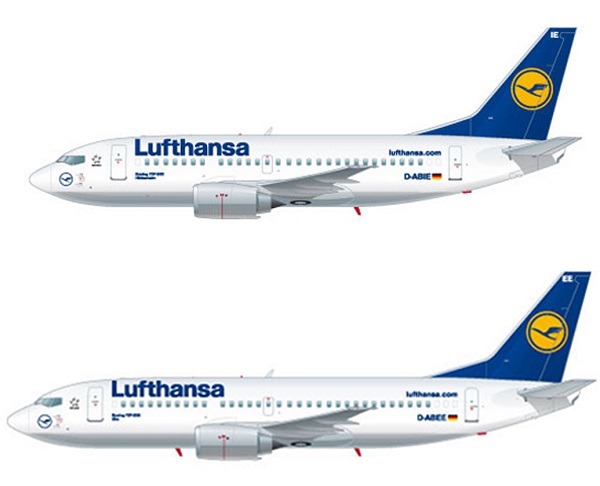Lufthansa has retired its last Boeing 737s after it helped launch the ubiquitous short-haul twinjet during the 1960s and became its first operator 48 years ago.
The German carrier ended revenue flights with the 737 on 29 October and operated a special farewell service for guests from Frankfurt to its maintenance headquarters in Hamburg and back on 31 October.
Once its six remaining 737-300s have been ferried to their new owners, "the 737 chapter at Lufthansa will be closed", said the maintenance division's chief executive Johannes Bussmann at a ceremony in the north German city.
The aircraft deployed for the farewell flight is registered D-ABEC as a reference to Lufthansa's first 737-100, which was delivered in December 1967 with the same tail sign.
Lufthansa notes that it was a key partner of Boeing to launch the 737. After the manufacturer studied a potential 60-seat short-haul aircraft during the late 1950s – which did not gain support from airlines – Lufthansa was looking a few years later for a twinjet that could carry 82 passengers and, crucially, fit seamlessly into the carrier's 707 and 727 fleet.
Bussmann notes that Lufthansa was "pressing" Boeing to develop the aircraft, and the carrier became launch customer in 1964 with an initial order for 21 737-100s. Other airlines followed, but they preferred the slightly larger 737-200.
Only 30 737-100s were built in total. Lufthansa later introduced the 737-200 too and, in 1985, ordered the 737-300 as the first of a second generation exclusively equipped with CFM International CFM56 engines. The initial 737-100 and -200 were powered by Pratt & Whitney JT8Ds.
In 1992, Lufthansa's 737 fleet peaked at 110 aircraft, covering the -200, -300, -400 and -500 variants. After 2001, the remaining fleet of -300s and -500s was kept stable at around 60 aircraft. But the number quickly declined after 2010.

Klaus Froese – who oversees Lufthansa's operations at its main Frankfurt hub, and joined the airline as a 737 first officer – says that creating a homogenous short-haul fleet around the Airbus A320 family is the main argument for the 737's retirement.
The fleet harmonisation is to create efficiencies. For example, crew training and spares provisioning can be organised as a single aircraft family rather than two.
Froese says he expects Bombardier to make CSeries offers to Lufthansa after the CS100 was introduced at sister carrier Swiss earlier this year. But he insists that management has no plans to introduce an additional aircraft type between the 140-seat A319 and the Embraer 195, which Lufthansa's regional unit CityLine unit operates with 116 seats.

Lufthansa's 737 fleet included the CFM56-powered -500 (top) and -300
If the mainline were to require capacity on smaller aircraft than the A319, Lufthansa will source that equipment from external units such as CityLine and Italian subsidiary Air Dolomiti, says Froese. While the two are are wholly owned group subsidiaries, he says they will offer more competitive costs than the mainline.
Lufthansa Technik has retained two de-registered 737-500s – one in Frankfurt and the other in Hamburg – for technical training.
Source: Cirium Dashboard



















